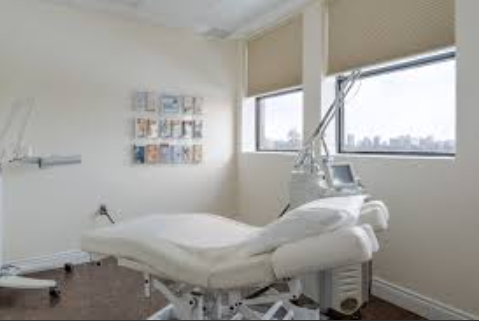Step-by-Step Guide to Setting Up a Dermatology Clinic
Setting up a clinic requires intricate planning, a clear understanding of your niche, and a strategic roadmap. Whether you’re keen on establishing a naturopathy clinic or a dermatology clinic, the process involves critical steps to ensure a functional and profitable practice. This guide provides a detailed walkthrough of setting up your clinic, addressing the unique needs of both naturopathy and dermatology practices.
Introduction
Opening your clinic is a significant endeavor. It’s more than just arranging the right furniture or buying state-of-the-art equipment. It’s about constructing a space that reflects your professional ethos, meets patient expectations, and complies with healthcare regulations. This guide combines insights for both a naturopathy clinic setup and a dermatology integrating their distinctive attributes and common considerations.
Understanding Your Niche
- Naturopathy Clinic Setup: Naturopathy is rooted in natural and holistic healing methods. The core appeal of naturopathy is its focus on prevention, healing, and optimizing health using organic treatments. Setting up this type of clinic involves understanding the philosophy of naturopathy and curating a space that encourages wellness and natural healing.
- Dermatology Clinic Setup: Dermatology focuses on the skin, hair, and nails, addressing both aesthetic and medical concerns. When setting up a dermatology clinic, it’s essential to integrate clinical expertise with patient-centered care, ensuring a comprehensive skincare service framework.
Step 1: Conducting Market Research
Before you start securing premises or purchasing equipment, it’s vital to analyze the demand in your area. Use the following methods:
- Demographic Analysis: Identify the target population, their demographics, needs, and preferences. For instance, urban areas might have a higher demand for dermatological services, whereas rural regions might lean towards naturopathy.
- Competitive Analysis: Evaluate your competition. Understand the services they offer and identify gaps in service that you can fill.
- Trend Analysis: Stay updated with the latest trends in both dermatology and naturopathy to ensure your clinic offers innovative solutions.
Step 2: Business Plan Creation
Constructing a detailed business plan is crucial. It should include:
- Executive Summary: Outline your mission, vision, and the services you plan to offer.
- Services Offered: Whether naturopathy or dermatology, list the treatments, procedures, and products you will provide.
- Financial Projections: Include initial investment estimations, break-even analysis, and expected revenue.
- Marketing Strategy: Detail how you plan to attract and retain clients.
Step 3: Legal Requirements and Licensing
Acquire the necessary licenses and permits to operate a medical clinic. This can involve:
- Clinic Registration: Register your clinic with local health authorities.
- Professional Licensing: Ensure all practitioners hold valid licenses.
- Zoning Requirements: Verify that your chosen location is zoned for medical services.
- Insurance: Secure liability insurance for the clinic and practitioners to protect against potential lawsuits.
Step 4: Securing Funding
Potential funding sources include:
- Bank Loans: Present a strong business plan to secure a loan.
- Investors: Attract investors willing to finance your vision.
- Grants and Subsidies: Explore government-funded programs supporting healthcare initiatives.
Step 5: Choosing the Right Location
The success of your clinic highly depends on its location. Consider:
- Accessibility: Choose a site that is easily accessible by public transport and has ample parking.
- Visibility: The clinic should be located in a visible area to increase walk-in clients.
- Neighborhood: Ensure the surroundings align with the clinic’s ethos (e.g., a naturopathy clinic might benefit from a serene, nature-invoking locale).
Step 6: Designing Your Clinic
The design of your clinic can influence patient experience:
- Reception Area: Create a welcoming and calming environment. Use natural elements like plants for a Vitamins and Supplements
- . For dermatology, consider modern aesthetics with engaging educational materials about skincare.
- Treatment Rooms: Ensure they are equipped with necessary tools and are comfortable and private.
- Waiting Area: Provide comfortable seating, reading material, and perhaps a refreshment station.
Step 7: Purchasing Equipment and Supplies
- Diagnostic and Treatment Equipment: Depending on your specialization, invest in high-quality equipment. Dermatology might require lasers and specialized tools, while naturopathy would use more natural implements and organic supplies.
- Office Supplies: Don’t overlook essential office equipment like computers, billing software, and telecommunication tools.
Step 8: Hiring Qualified Staff
Your team reflects your clinic’s values and expertise. Key hires include:
- Practitioners: Qualified naturopaths or dermatologists with valid credentials.
- Administrative Staff: Efficient receptionists and office managers to handle appointments and billing.
- Support Staff: Medical assistants and technicians to support clinical operations.
Step 9: Implementing Management Systems
Invest in robust management systems:
- Electronic Health Records (EHR): Streamline patient record management.
- Billing Systems: Efficient billing and insurance processing systems ensure smooth transactions.
- Appointment Scheduling Software: Optimize scheduling to reduce wait times and improve patient flow.
Step 10: Marketing Your Clinic
A strong marketing strategy will attract and retain clients:
- Online Presence: Build a website showcasing services, testimonials, and booking options. Optimize it with primary keywords like “naturopathy clinic setup” and secondary keywords like “dermatology clinic setup.”
- Social Media: Use platforms like Instagram and Facebook to engage potential clients with informative content.
- Community Engagement: Conduct workshops and seminars to establish your clinic as a community health advocate.
Step 11: Ensuring Quality Control
Routine evaluations and patient feedback loops can help maintain high standards:
- Patient Feedback: Regularly collect and analyze patient feedback to improve services.
- Continuing Education: Encourage staff to attend workshops and acquire new skills to provide up-to-date treatments.
Step 12: Grand Opening and Ongoing Operations
- Launch Event: Host a grand opening to introduce the clinic to the community. Offer promotions and tours to attract initial clients.
- Ongoing Reviews: Keep operations seamless through regular team meetings, reviews, and strategy updates.
Conclusion
Setting up a clinic, be it naturopathy or dermatology, requires dedication, strategic planning, and a passion for healthcare. By following these structured steps, aspiring clinic owners can create a space that not only meets the demands of clients but elevates the standards of care within the community. Remember, the journey to establishing a successful clinic goes beyond mere logistics; it’s about instilling trust and promoting wellness in every venture you undertake.




